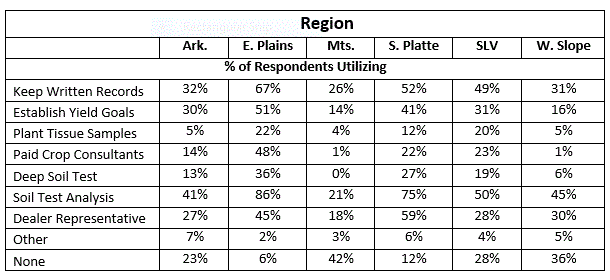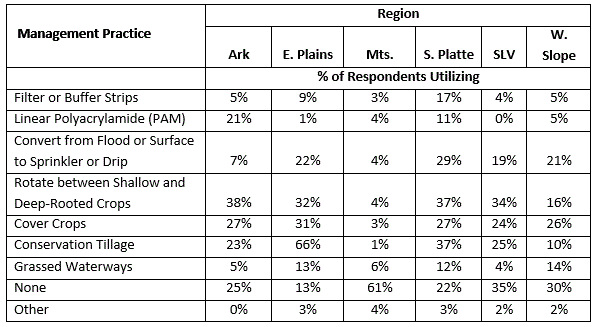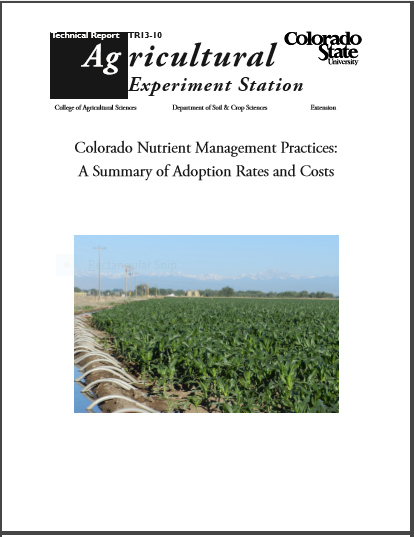A 2011 Colorado State University survey of Colorado producers in irrigated agriculture was conducted to better understand their nutrient management practices.
Colorado’s irrigated farming regions are diverse with variations in crop and livestock systems, irrigation systems, water sources, nutrient types and application amounts, input costs, and management styles.
These factors combine to influence BMP adoption rates, particularly by region and farm size. The Eastern Plains region had the highest overall adoption rates for many of the practices followed by the San Luis Valley and the South Platte.
Nutrient & Fertilizer Management
- Soil testing was highly used in the Eastern Plains and South Platte regions. These areas have more intensive cropping systems and tend to use the most nutrients.
- Plant tissue testing was not widely used across the state, but was reported by roughly one out of five respondents in the Eastern Plains and San Luis Valley. These areas grow more acres of crops, such as potatoes, where tissue testing is much more common.
- Use of paid crop consultants to determine fertilizer rates is highest in areas of higher value crops and where crop consultants are active.
Nutrient BMPs by Region

Irrigation Management
Irrigation System Type by Region

- On larger farms, a greater percentage of irrigated acres use sprinkler irrigation, particularly center pivot
- 56% of survey acreage used sprinkler
- 42% of survey acreage used flood/furrow
- 1.7% of survey acreage used drip
- Sprinkler irrigation acreage increased by 14% compared to a CSU 2002 survey
Soil & Erosion Management
- Conservation tillage was the most popular practice. The Eastern Plains region had the highest adoption rate, which likely reflects this region’s higher amounts of dryland acreage and center pivot irrigation.
- Linear polyacrylamide (PAM) had the highest adoption rate in the Arkansas Valley where it has been promoted most heavily by NRCS and Extension for surface irrigated systems.
- Buffer strips was the overall least popular practice
Soil Erosion BMPs by Region

Manure Management
Manure BMPs by Region

- More than half of the respondents indicated use of manure or compost as a nutrient source.
- BMP adoption for determining manure application rates was lower than for chemical fertilizer rates.
- The Eastern Plains and South Platte regions had the highest number of respondents who reported using basic manure application BMPs. These areas also have the highest number of confined livestock.
- Statewide, respondents were most likely to apply manure during March and April.

